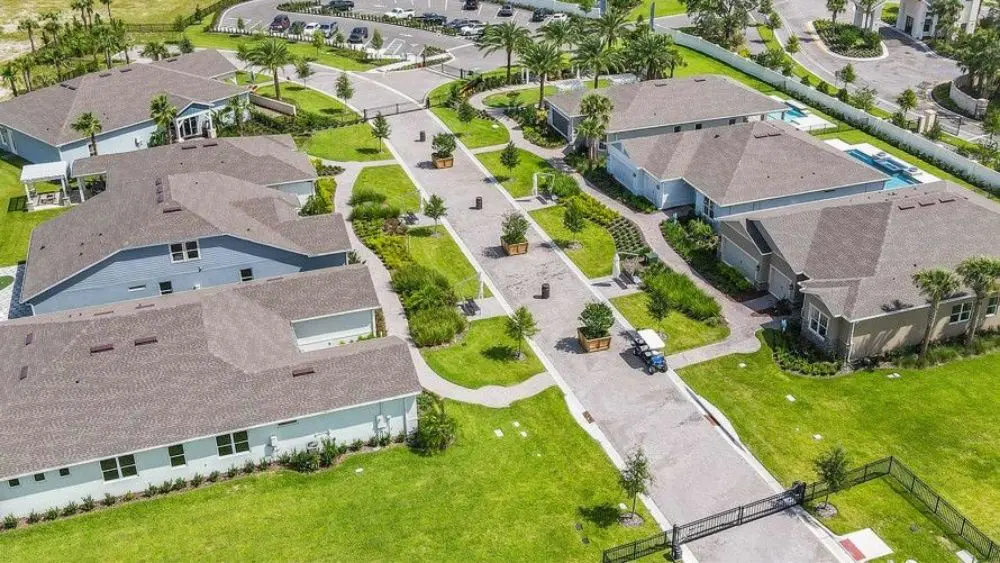
Home owner associations are often seen as a necessary evil. Despite the occasional (but dramatic) headlines about conflicts between owners and their associations, it turns out that HOAs are far more necessary than evil. And owners are far more satisfied with their associations than not.
According to the Community Associations Institute (CAI), a non-profit dedicated to building better communities, some 62 million people live in an estimated 315,000 association-government communities, from townhouses to detached single-family homes to apartments. In the case of big master-planned communities, which encompass all kinds of housing, the property can be as large as a small city.
With that many people coming under the umbrella of a community association, which are also known as home owners associations, property owners associations and condominium associations, among other names, there are bound to be some malcontents, as well as those who have legitimate grievances.
How Do People Feel About HOAs

According to independent research conducted for the CAI by IBOPE Zogby International, seven out of 10 people who live under owner associations are happy with their communities. Only 8 percent expresses some level of discontent, while 22 percent were neither satisfied nor dissatisfied. The survey was taken in 2012, and the result is strikingly similar to studies by Zogby in 2005, 2007 and again in 2009.
Still, the Internet is filled with complaints of overly aggressive, unresponsive associations that allegedly overstep their bounds, make decisions that on the surface appear to be completely irrational and otherwise flaunt their authority. But while some gripes certainly have merit, and courts have occasionally said an association has overstepped its bounds, they often are filed largely by people who just didn’t get their way.
When asked by Zogby to name the worst aspects of their associations, 15 percent named restrictions on exterior improvements as their chief complaint, while 9 percent said paying dues or assessments to cover their share of the services and amenities provided by the association. But 34 percent said there is nothing bad about their association.
Zogby also asked residents to name the best aspect of living with an association, with these results: Neighborhood attractiveness, 24 percent; less maintenance for individual owners, 17 percent; community safety, 13 percent; and property values, 12 percent.
Why People Like HOAs

No one keeps count, but as a general rule, three-quarters of all new development in metropolitan areas come with an owner association of one kind or another. Typically, these projects feature not just well-designed houses or apartments, but also more efficient land planning and a host of amenities — pools, tennis courts, clubhouses, walking trails, wide-open green spaces and even golf courses — that other communities don’t or can’t offer.
Your community — you and all other owners — owns these amenities as shared facilities. But you don’t have to pay for them, or take care of them, at least not directly. Rather, you and everyone else will pay monthly or quarterly dues or assessments to the association of owners, of which you all are members, whether you use the amenities or not. You and your fellow owners elect a board of directors that will be responsible for operating your community. And while some boards will hire a management company to handle the day-to-day chores, others prefer to do it themselves.
While the creation of an association allows builders and developers the opportunity to offer more amenities than they might otherwise feature, they are often required to do so if they want to build at all. That way, fiscally challenged municipalities can delegate many of the responsibilities that belong to state and local government — road maintenance, for example, or snow removal and trash pickup — to the community’s owners. So developers build the infrastructure, the owners are responsible for the services and localities can continue to permit needed housing without having to pay the cost.
Americans have largely accepted the collective management structure of community living. The covenants and rules are no longer novel — in fact, they are quite similar to those that exist in rental apartments — and are spelled out in the documents new owners are given at closing. The rules are there to ensure the collective rights and interests of all owners, protect and enhance property values and provide and protect the services and amenities that have been promised.
Still, there are disputes. Some are small, like whether bird feeders are allowed in the backyard, and some are not-so-small, like painting your house a particular color. Typically, if there is an issue, it is because someone is not familiar with the rules or chooses not to follow them. Sometimes, the issue arises because the board isn’t doing its job.
Every once in a while, the problem is with an overzealous board that is trying too hard to do its job. If that’s the case, and other owners disagree, they can either vote the rascals out or change the rules. After all, owner associations are the most local form in representative government, a democracy in which leaders are elected by their neighbors in the best interests of everyone living there.

Lew Sichelman is a nationally syndicated housing and real estate columnist. He has covered the real estate beat for more than 50 years.
 Plant Prefab: LivingHomes’ Groundbreaking Spinoff
Plant Prefab: LivingHomes’ Groundbreaking Spinoff